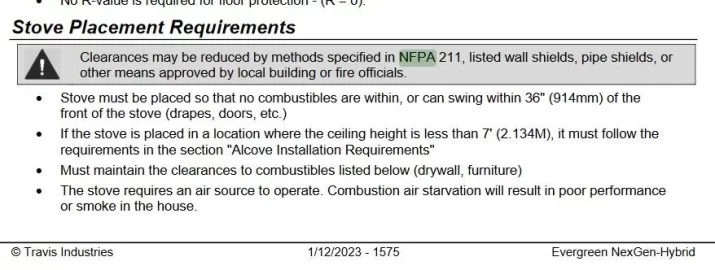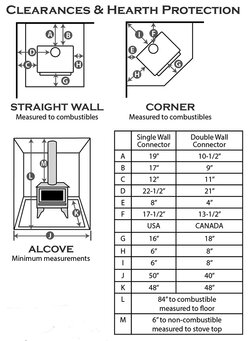Hi. I've been looking through how to get a little bit of a clearance deduction and have looked over this...

I will be using Versetta stone as a "back drop" in a corner installation.
I will be using Versetta stone as a "back drop" in a corner installation.
- For "b", is that meaning that I would have (from outside to inside), siding → sheathing → studs → drywall → 1 in. class fiber or mineral woos batts → 1/2 thick foam board like https://www.homedepot.com/p/R-Tech-...-Rigid-Foam-Board-Insulation-320810/202533656 → (maybe 1/2 in. Durarock) → Versetta faux stone.
- I also don't see why just using a higher R-value foam board like https://www.homedepot.com/p/R-Tech-...-Rigid-Foam-Board-Insulation-310891/202532856 isn't an option listed on here. Wouldn't the R-7.7 reduce the heat getting to combustibles, and thus be a valid way to reduce clearances?
Last edited:



